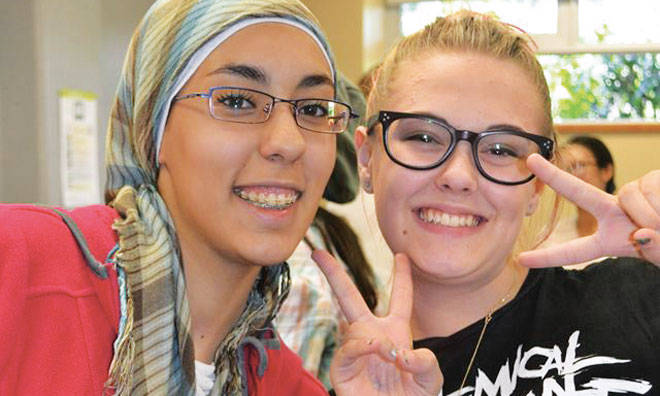
Power of A: This Is Girl Power
With a successful program, Soroptimist International of the Americas teaches teens to chase their dreams.
Meg, a teen from Japan, learned that she needs to be “active and tenacious in order to realize my dreams.” Andressa, from Brazil, connected with advice to “not put our dreams in the hands of another person.” And Melissa, from the U.S., felt empowered when she realized that “no matter our background or situation, we can make it. We can become something successful.”
Mission accomplished for the women who mentored these girls through Soroptimist International of the Americas’ “Dream It, Be It: Career Support for Girls” program, which earned the association a 2017 Power of A Summit Award.
“They’ve been hearing that girls have the power to change the world, they’ve been getting all the messages, but they don’t feel powerful,” says Lori Blair, SIA’s senior director of program services. “There’s a gap between what girls want to do and the resources and tools they have to make it happen.”
Bridging that gap for girls who face obstacles to achievement is the whole idea behind “Dream It, Be It.” Mentors “tend to be at a stage in their life where they have the time and resources to devote to volunteer work,” says Blair, and they are eager to have a sustainable impact on the teens’ lives.
During small weekly groups or a one-day conference, “the girls really blossom—they open up and engage in the process,” says Blair. There is plenty of encouragement, but also enlightenment.
“They hear about needing to be resilient to rise above obstacles,” says Blair. “They’re taught how to put together an action plan, and how to set smart, achievable, measurable, time-bound goals.”
No one is discouraged from having big dreams, as one future pediatric surgeon did, but they do confront the image they’ve seen of accomplished women “taking a linear path to success—high school, grad school, medical school, doctor,” says Blair. “Their path is not going to be that linear.”
For the Soroptimist mentors, teaching girls how to follow a path to success is step one. Because the teens’ progress isn’t tracked after the program ends, most volunteers don’t get to see step two—the direction teens take after graduation. They can only hope that it’s forward.






Comments